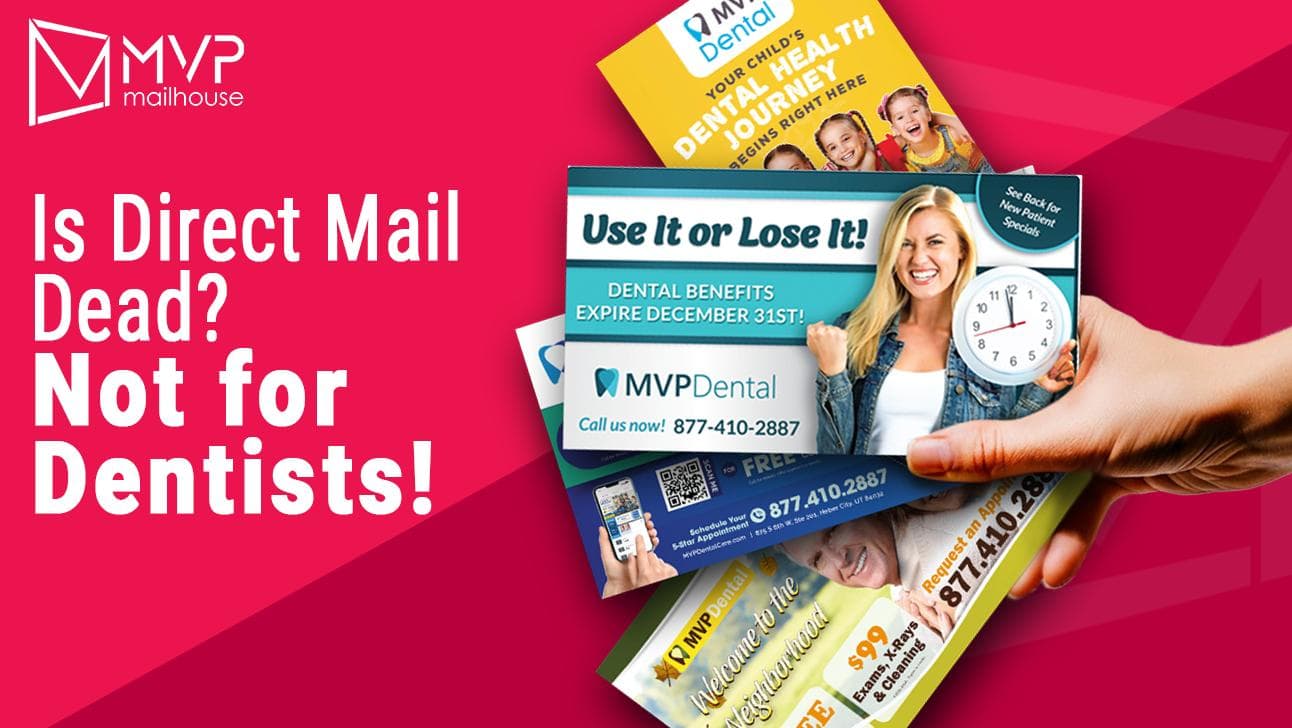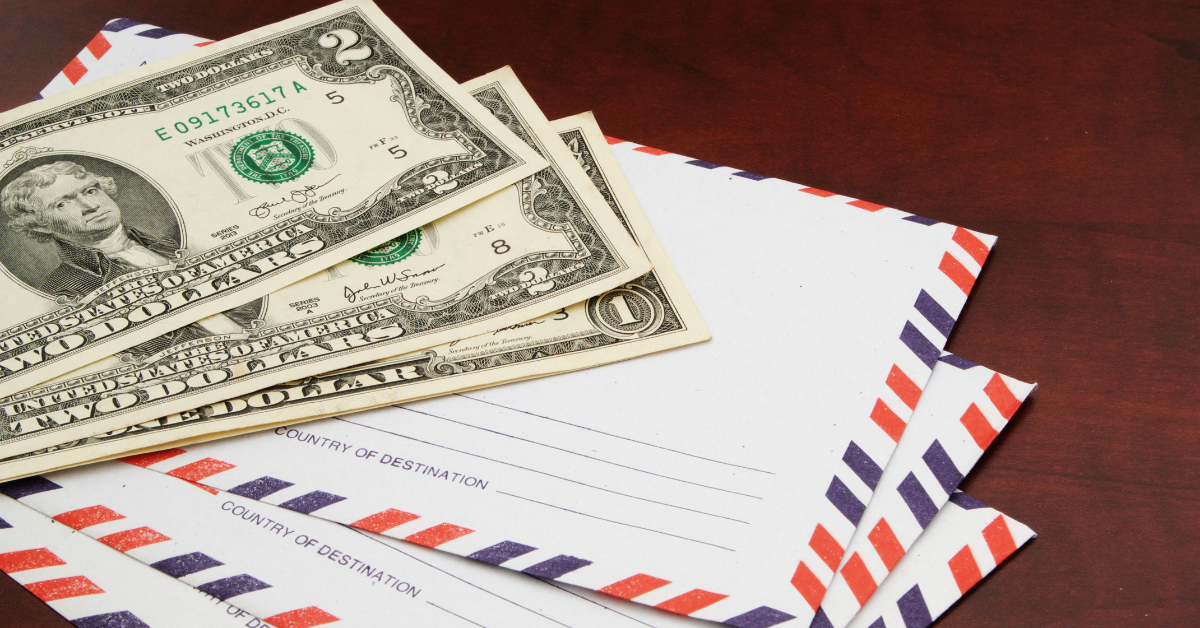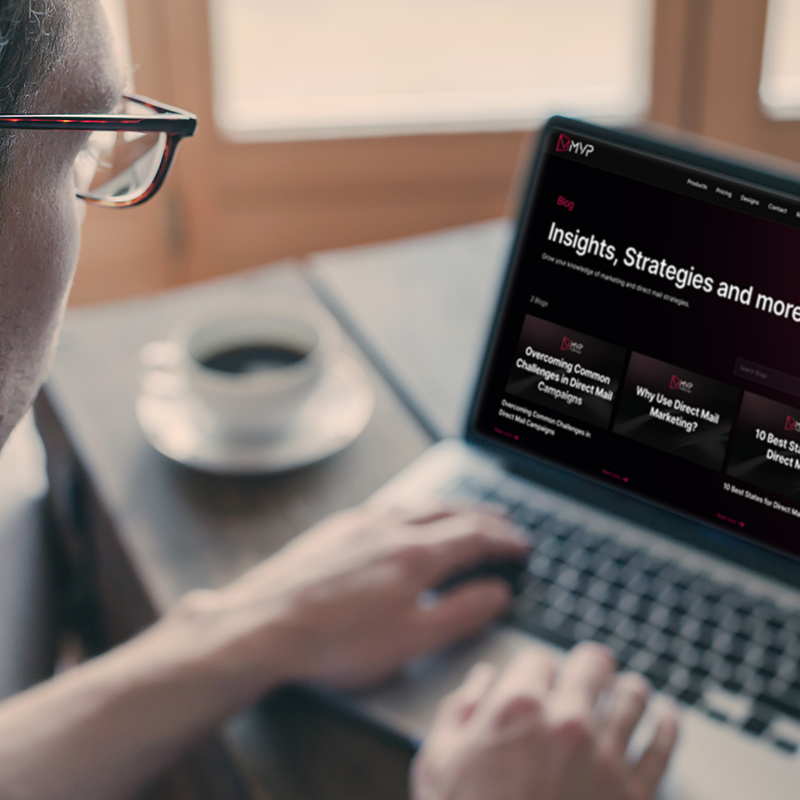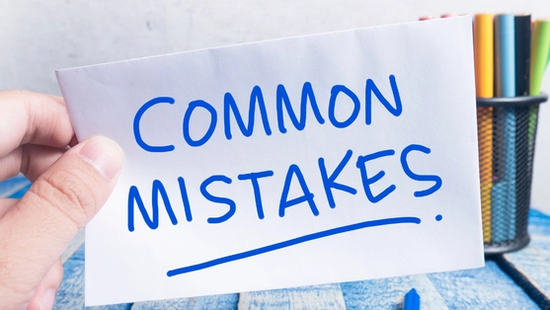What is Direct Mail Marketing?
What is direct mail marketing? Learn the concept of personalized mail to boost your dental practice's reach and ROI. Start your campaign today!

Today, direct mail marketing still stands out. It's a hands-on way to connect. You send things like postcards, flyers and letters right to people's homes or offices. This method lets people touch and feel your message, making a stronger impression than digital ads.
When people hold your mail, they pay more attention and remember your brand better. Adding direct mail to your strategy can balance out digital efforts. It might lead to closer customer connections and better sales.
Understanding Direct Mail
Direct mail marketing uses tools like postcards, flyers, and catalogs. These aren’t just pieces of paper. They’re chances to connect deeply with people. Each item can carry a personal touch. Like adding a name. This isn’t just a trick. It builds real connections.
With direct mail, businesses can really focus their messages. They can cut their audience into specific slices. This could be by age, what they’ve bought before, or what they might like next. This way, each message hits home harder. It’s more likely to make someone act.
Also, there’s something special about holding a physical mail piece. It’s different from emails or texts. This feeling can stick with people. It makes the message matter more. This can turn one-time buyers into loyal fans.
Direct mail isn’t just about ads. It’s about making people feel special and seen. Done right, it pays off by deepening consumer bonds.
How Direct Mail Works
Direct mail marketing remains highly effective despite our digital age. It starts by targeting the right people and ends with analyzing each campaign's success. Let's break down the steps and strategies that make direct mail work well.
- Target Audience Selection: Success begins with carefully choosing who to target. Marketers look at more than basic demographics. They look into deeper into psychographics like attitudes and lifestyles, and behaviors like purchasing habits. This method helps create messages that hit home and reach those most likely to engage with direct mail.
- Design and Copywriting: After defining the audience, the focus shifts to creating a compelling message. This stage mixes art with science, aiming for engaging design and impactful words. The message must speak directly to the recipient’s desires or problems and inspire action. Every detail, from typography to colors, is tuned to evoke feelings and responses, all of which are part of our MVP Mailhouse capabilities.
- Printing and Production: The tangible aspect of direct mail adds both complexity and opportunity. Choices in paper quality and print techniques affect how the message is received. Better materials can improve the offer's perceived value and strengthen the brand. Creative techniques like embossing or special coatings can make the mail piece more noticeable, a hallmark of our in-house printing services.
- Distribution: Sending mail is more than just mailing out envelopes. Timing is crucial and can greatly impact a campaign’s success. Factors like holidays or market trends can influence when to send mail for the best open rates.
- Response Tracking and Analysis: The final step is to evaluate how well the campaign performed. This means looking beyond mere response counts to why people reacted as they did. Using tools like personalized URLs or QR codes can track detailed interaction data. This information isn’t just about measuring success—it’s used to refine future campaigns.
Direct mail creates a unique, tactile connection with recipients, an experience hard for digital ads to replicate. Each part of the process from selecting an audience to analyzing responses is a chance to improve engagement and deepen customer relationships.
Done right, direct mail is a potent part of a modern marketer's toolkit, driving personalized action and enhancing loyalty.
Types of Direct Mail
Direct mail is versatile. It adapts to different purposes and audiences. Here's a breakdown of the most common types:
- Postcards: Cheap and cheerful, postcards get straight to the point. They're perfect for announcements and reminders.
- Letters: Need to get personal? Letters allow detailed, customized messages. Use them to deepen customer relationships or share special deals.
- Catalogs: Show off a broad product range with a catalog. It invites customers to browse and buy more.
- Brochures: Like mini-catalogs, brochures focus on particular products or services. They're handy at sales points or within larger campaigns.
- Flyers: Eye-catching and brief, flyers are ideal for promoting events or launching new products.
- Self-Mailers: No envelope needed here. These pieces fold and seal with a tab and can carry forms or promotions.
- Dimensional Mailers: These stand out with pop-ups or 3D features. They cost more but make a big impression.
- Promotional Products: Add a branded gift like a pen or magnet. It keeps your brand in sight longer.
- Transactional Mail: Bills or statements can double as marketing tools. Dubbed 'transpromo,' they blend expected content with ads.
Direct Mail in the Digital Age

Dental direct mail remains a strong strategy in marketing, notably for dental practices. It gives a physical connection that many people still value, especially those less online or who like holding something in their hands.
Dentists find dental direct mail useful because it personalizes their service visibility. Aside from digital ads, direct mail can be an effective way on how to do dental practice marketing. It can cut through the noise, especially appealing to older people or those without much internet access.
Additionally, dental direct mail lets dentists track and adjust their tactics precisely. They use special codes or offers that help them see what's working. This helps them connect better with people and possibly get more patients, improving their community impact.
Advantages of Direct Mail Advertising
Direct mail advertising often goes unnoticed in today’s digital world but it offers distinct benefits in an oversaturated online market. Here’s why it still works.
- Tangibility: Direct mail pieces like postcards, brochures, or catalogs physically exist, making them hard to ignore. They stick around in homes or offices, constantly reminding people about your brand. Their physical nature makes them memorable and shareable.
- Personalization: Direct mail isn’t just about using someone’s name. You can customize content based on demographics, buying history, or personal likes, making your message more relevant. This can make your audience feel a closer tie to your brand, turning each mail piece into a personal conversation.
- Trustworthiness: With growing online ad fatigue and privacy worries, direct mail is seen as safer and more trustworthy. Sending a physical item shows commitment to quality and authenticity, appealing to consumers wary of digital ads.
- Reduced Competition: With many companies focusing online, the direct mail field is less crowded. A well-made mail piece can stand out from endless online ads and emails. This is great for businesses wanting to establish a strong brand or communicate clearly without getting lost online.
By including direct mail in your marketing, you can use its unique benefits to boost your efforts. As consumer habits change, mixing reliable direct mail with digital strategies can strengthen your overall marketing.
Comparing Direct Mail and Email Marketing
Direct mail and email marketing are both important but they serve different goals. Let's look closer at their unique perks:
- Visibility: Direct mail cuts through the noise of online ads. It doesn't deal with spam filters, making sure your message gets right into people's hands. This means more eyes on your message without competing against a sea of digital content.
- Engagement: Handling direct mail adds a touch experience. People might flip through a brochure or open a special envelope. This hands-on interaction leads to better engagement because it needs an active effort, unlike just scrolling online. It also helps people remember and respond better.
- Longevity: Direct mail lasts longer than emails, which can disappear in a busy inbox. A mail piece might stay in someone’s space for a while, reminding them of your message every time they see it. This makes direct mail great for longer-lasting campaigns.
In short, both methods are important for a well-rounded marketing plan. Knowing their strengths helps you target your efforts better, making sure you reach people effectively. You can look at our blog on the difference between direct mail and email marketing.
How Much Does Direct Mail Cost

Direct mail campaigns can be pricey, especially when compared to options like email marketing. They require spending on production, materials, and postage. These costs add up, especially in large campaigns. Yet, the appeal of direct mail is its potential for high returns on investment (ROI). For businesses to benefit, they need to plan carefully.
Choosing the right recipients is crucial. Each person must fit specific, strategic criteria. The campaigns must also mesh well with other marketing efforts.
Despite the high initial costs, direct mail can be very rewarding. With accurate targeting and perfect execution, it pays off. Aligning it with other marketing activities boosts the overall marketing impact. This approach improves not just the return from each mailing but also the strength and effectiveness of the broader marketing strategy.
You can look at our pricing for more details or look at our blog about on how much does direct mail cost.
Budgeting for Direct Mail
Direct mail campaigns work well for businesses. They connect personally with potential patients. But, the success of these campaigns depends on careful budgeting. Let's look at what affects the cost and how to get a good return on investment (ROI).
- Volume of Mail: The amount of mail you send affects costs. Sending a lot can lower the cost per piece due to bulk discounts. But, remember to keep your mailing targeted to not weaken your campaign’s impact.
- Design and Aesthetics: The look and feel of your mail matter. Fancy designs and quality prints can catch eyes but cost more. Material choices like paper and special finishes also play a role. Pick design features that will most likely appeal to your target audience and budget wisely.
- Postage Costs: Postage is a big part of the expense. Rates change with the size, weight, and shape of the mail. Odd sizes or heavy items cost more. It's useful to talk with postal services to find the most cost-effective way to send your mail.
Strategic Tips for Dental Practices: For dental clinics aiming to attract new patients, targeting the right demographic is key. Know who potential patients are, where they live, and their dental needs. Good targeting means your mail reaches those likely to respond, boosting your campaign’s ROI.
A smart direct mail campaign can bring many new patients to a dental clinic. While initial costs might be high, the potential for more appointments and lasting patient loyalty often makes it worthwhile.
With the right content, design, and distribution strategy, dental practices can use direct mail not just to reach but also to engage potential patients, making this traditional marketing tool a vital asset for growth.
Strategic Execution of Direct Mail Campaigns

Direct mail marketing is very useful, especially for dentists. It's not just about sending flyers. You need to really know who you're sending them to. This means looking at who they are, what they do, and how they've interacted with you before.
By combining direct mail with online steps like emails or personalized websites, you make it easier for people to interact with you in different ways. Make sure your mail looks good and speaks directly to the reader, with clear next steps like making an appointment or checking out your website.
Also, send your mail at the busiest times for dentists. Track each campaign closely to see what works and what doesn’t. This careful, informed approach doesn’t just increase your returns—it also builds stronger bonds with your patients, turning every piece of mail into an important part of your relationship with them.
Personalization and Segmentation
Direct mail works great for dental offices. It goes beyond just adding a name. You get to customize messages based on each patient's dental story and needs. Here's how to use this smartly to boost engagement and conversion:
- Demographic Segmentation: Change your mail to match where your patients are in life. Families with kids might like tips on child dental care, while older folks might want to know more about dentures. This shows you get their unique needs and can handle them at any stage.
- Behavioral Targeting: Think about how patients have interacted with your clinic before. Did someone just finish a big treatment? Send a thank-you note and remind them of their next visit to keep them coming back. Haven't seen someone for a while? A friendly reminder for a check-up might bring them back, with a special offer too.
- Service-Specific Promotion: Know who could benefit from certain services. Teens and adults interested in straighter teeth might like info on braces. Someone curious about improving their smile? Send them details on cosmetic options. This makes your mail relevant and personal, showing you care about what they specifically need.
Using these tips in your direct mail can really make a difference in how patients respond. They'll feel valued and understood, helping to build trust and keep them coming back.
Timing and Frequency
Timing and frequency matter a lot in direct mail campaigns for dental offices. Here's how to make your mail more effective:
- Regular Updates: Keep your practice on your patients' minds. Send out news on new services, tech updates, or special deals regularly. Time these updates with new years or seasons to grab more attention.
- Preventive Reminders: Remind your patients to visit. Send reminders for check-ups or follow-ups. This keeps their dental health on track and avoids emergencies. Customize these reminders based on each patient's history.
- Strategic Scheduling: Send your mail when patients are likely to think about healthcare. For example, target school holidays or before vacations. This increases the chances they'll book an appointment. Look at patient data and local events to choose the best times.
These tactics help dental offices keep and convert more patients. Each strategy helps build stronger bonds with patients, boosting loyalty and trust.
Creative Content and Design
Direct mail design is key. It grabs attention. Think of the mailbox as a battle zone. Your design needs to stand out. It's crucial. Your dental practice needs to shine. Use high-quality, eye-catching designs.
They cut through the noise. Mix bold visuals with clear, short messages. Show off what makes your dental practice special. This draws the eye. It shows your value clearly. Tell them why your services are the best choice. Highlight your unique offerings. Maybe it's top of the line dental techniques or a calm office vibe.
Show how these benefits can improve their dental experience and results. Good direct mail design does more than catch the eye. It builds connections. It motivates potential patients to act.
Incorporating Technology
Add digital features to your direct mail for a big impact. For example, QR codes can link to online tours of your clinic or booking pages. This connects print to digital. It catches people's attention and makes their journey easier.
QR codes work well. Potential patients scan them to see your clinic in a video. This builds trust. They feel like they know your clinic before visiting. They can also book appointments easily online. This setup boosts response rates. It combines the feel of mail with the ease of digital tools.
Direct Mail Analytics and Adjustment

Today, being adaptable is key, especially with direct mail. It’s important to keep a close eye on how your mail campaigns are doing. This means more than just seeing who responds. You need to dig into the numbers—like how many people are engaging, who is converting and the overall return on investment.
These details help you see what works and what doesn't. With this knowledge, you can tweak your strategies to make your next mailouts even better. This isn’t just about making small changes; it’s about evolving your campaigns to fit your audience’s changing needs and preferences.
By understanding your audience better, you can come up with new ideas. Maybe test different messages or try new formats. Timing could also be key. Keeping your direct mail strategies flexible ensures they stay relevant and effective, truly connecting with your audience.
Tracking and ROI
To boost your direct mail campaigns, try Personalized URLs (PURLs) or unique promo codes. These tools help track responses and pinpoint what works best. You get to see exactly how your audience behaves, which is vital for figuring out your return on investment.
This is key, considering direct mail isn't cheap. Using this data, you can tweak your strategies, making sure you're spending wisely and really reaching your audience.
Last year, direct mail really held its own, with response rates between 2.7% and 4.4%. That's a lot better than email and social media, which only saw about 0.12% and 0.08% respectively. Even more impressive is how well direct mail converts—14% on average, compared to just 1.9% for email and 1.3% for social media(Postie).
These numbers show that direct mail still has a big impact, even in our digital world. It remains a strong choice for marketers looking to get real results.
A/B Testing
A/B testing is a simple yet effective tool for optimizing direct mail campaigns. It gives you insights into what your audience likes. For instance, try two different headlines in your mail and see which one works better. This approach lets you find out what catches their attention and gets them to respond.
You start by tweaking small things, like the offer or the layout. Over time, this method helps you refine your strategy, making your marketing sharper and more focused. You learn what resonates with your customers and keep improving.
Consistent A/B testing doesn't just boost your campaign's effectiveness; it also helps build a habit of using data to make decisions. This can transform how your team approaches marketing.
Leveraging Direct Mail for Dental Practice Growth
Direct mail is appealing. It feels personal and can build trust, especially in dental care. It's different from digital options. A real letter can show care and leave a lasting impression. This matters a lot for dentists who need trust to attract and keep patients.
Planning your direct mail?
Think about who your patients are. Consider their age, dental needs, or lifestyle. Personalize your messages. It could be a simple reminder for a check-up or info about new services. Customized mail feels special and thoughtful.
MVP Mailhouse can help. It has tools and tips to make your direct mail better. It shows you care about your patients. Targeted campaigns can make a big difference. They can help get new patients and keep the old ones happy. Want to see what MVP Mailhouse can do for you?
Check it out. It could help your practice grow.
Conclusion: The Value of Direct Mail Marketing
Direct mail is still vital today. It excels in areas like dental marketing where trust matters. Mailed items add a personal touch that digital platforms often lack. This method emphasizes touch and allows for deep personalization, influencing patient decisions strongly.
Dentists can customize mail to meet specific needs, making the content relevant and timely. They might send pediatric care info to families or discounts to newcomers. This makes the campaigns more appealing.
Direct mail's tangibility allows for creativity. Vivid colors, compelling graphics, and unique materials help mailers pop. Adding QR codes links these tangible items to online actions, like scheduling appointments.
With personalized and inventive approaches, direct mail grabs attention and fosters trust. It demonstrates a dental office's commitment to individual needs. Done right, it boosts the value of services, increasing the likelihood of turning prospects into regulars.
Direct mail can enhance your dental practice. Looking for new patients? Need to promote new services? Reminding people about appointments? Direct mail works. It’s targeted. It’s personal. Stand out from the digital clutter.
Visit MVP Mailhouse online. See how our direct mail solutions fit your practice’s needs. Start your campaign. See your practice grow.
Your next patient success story? They might just find it in their mailbox!
Tags
Related blog



